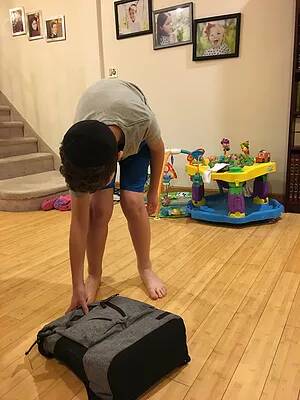Patients come to physical therapy for a wide variety of issues. We see everything from neck pain to foot pain and basically everything in between.
One common issue that people ask about is their posture. Age doesn’t even seem to be a major factor. We have patients in their 20s and in their 80s concerned about their posture.
After we help someone get into the correct posture they often ask “if THIS is proper posture why is it so uncomfortable?”
To answer this question we need to start with a basic understanding of the human body, and it’s ability to adapt.
Our bodies are uniquely able to adapt to the demands we place on them. A good example of this is gaining and losing weight. When someone gains a lot of weight, they don’t explode! Their skin and muscles stretch to accommodate their new weight.
On the other hand, if someone loses weight their skin and muscles shrink and they aren’t left with tons of excess skin flopping around. (The exception to this is if the weight is lost too fast, as seen with various surgical procedures, then the weight loss happens too fast for the skin to shrink and the result is, in fact, excess skin)
Let’s apply this concept to posture.
The more time we spend in poor postural positions the more our muscles adapt to these new positions. As that happens, it becomes more difficult and uncomfortable to get into the proper posture…and stay there.
Using the same logic, the more time you spend with the correct posture the easier it will be to maintain it.
But how did our posture get so bad in the first place?
To answer that we need to go way back to our childhood.
It is truly amazing to watch a 3 or 4 year old. They sit straight, stand tall and bend down in a perfect squat…every time. No one has to teach them how to squat. They naturally do it correctly. The reason is simple. They haven’t yet learned any IMPROPER movement patterns so their body naturally uses the most efficient, and correct, technique.
Take a look at the picture of this child bending.

Then they go to school and it is downhill from there.
Why? Because they spend their days sitting in a chair, leaning over a desk.
Then, for the rest of their lives, their default position is sitting in a chair.
Over time, all this sitting creates weakness in their core and upper back leading them to develop poor movement patterns in everything they do.
Don’t believe me? Take a look at my 13 year old, Ari, bending down to pick up his knapsack. OUCH! (and yes…we are working on improving his bending technique!)

They begin to sit slouched over, bend using their back instead of a proper squat, and stand hunched forward.
Gravity keeps pulling them down and they keep losing the battle, falling into progressively worsening posture.
It has been said “sitting is the new smoking”.
While the correlation between sitting and specific disease is not as direct as smoking, the overall effect on the body is catastrophic. Prolonged sitting over years and years leads to poor posture, weak muscles, poor endurance, poor cardiovascular and pulmonary health, back and neck pain (like herniated discs etc.) and countless other physiological changes.
The greatest shame is that this is SO preventable. The challenge though… is we should be starting to fix this when we are children rather than when we are adults.
If you are a parent (or grandparent) of young children you can (and should) encourage them to get out of their chairs and stand up! This can apply to play time as well as study time. Studying can just as easily be done standing up and the benefits are huge.
Some schools have even implemented standing desks, but it is unrealistic to expect every school to do this. As parents we are responsible to teach our children a better way and encourage them to stand up.
If you are wondering what you can do for yourself or if it’s too late…don’t worry. It is never too late to start improving your posture (although sometimes you can’t completely reverse the effects of bad posture).
The key is to educate yourself on what proper posture really looks like and what exercises you need to be doing to improve your posture.
Over the next few weeks we will continue to discuss posture, both sitting and standing, to help you get started on the road to improved posture.
If however, you are anxious to start on the “straight” path sooner, don’t hesitate to set up an appointment and come meet with one of our therapists who specialize in posture.

